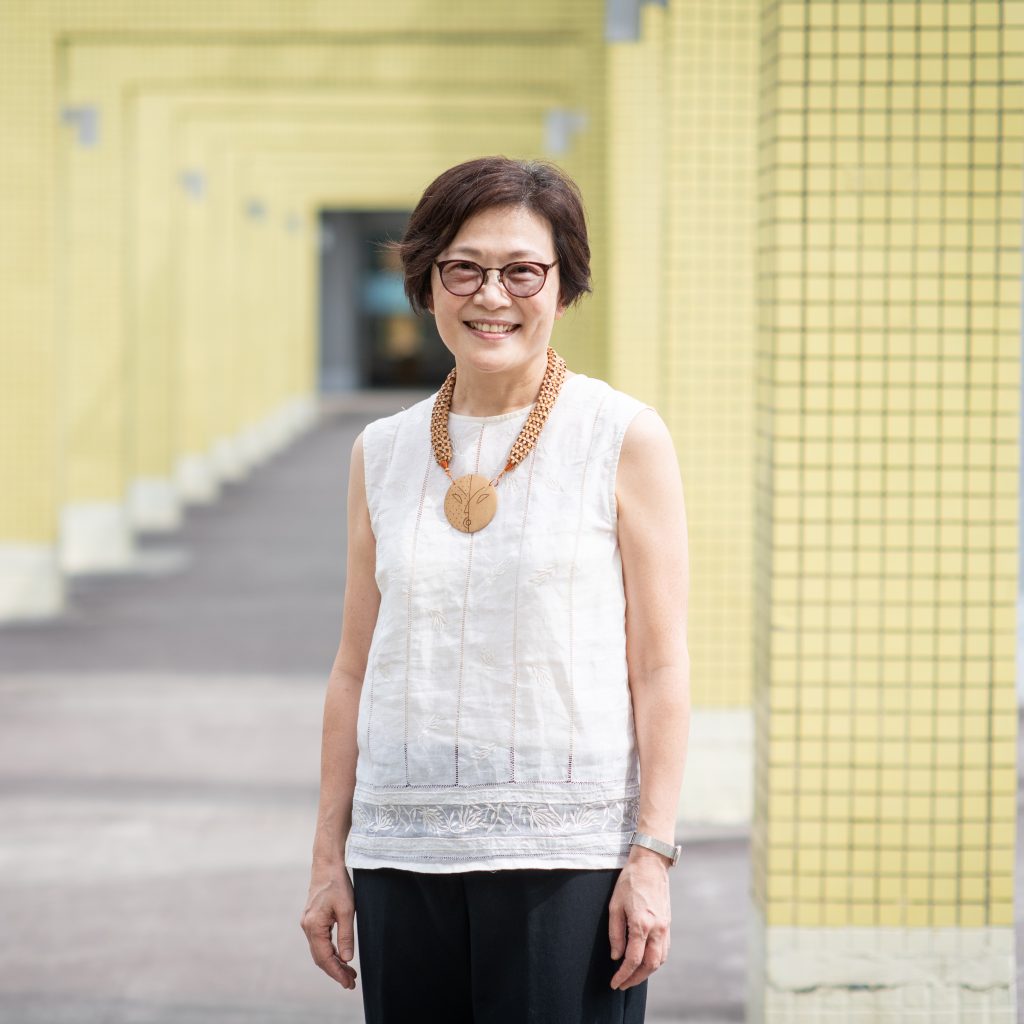“Hongkongers are travel maniacs, but the world is in Hong Kong, why wouldn’t we get acquainted with our diverse local cultures?” Anthropologists are master storytellers, as the book Guava Anthropology (《芭樂人類學》) puts it. Chatting with anthropologists is always a “thought-provoking and an out-of-the-ordinary” experience. Prof Maria Tam the fearless roamer fits neatly into the description. Our interview went on for almost three hours, tightly packed with exhilarating details of her long-running “Multiculturalism in Action Project”, as well as her fieldwork as a factory worker in Shekou three decades ago.
“I yearned to understand China’s earth-shaking transformations”
Maria is Associate Director of the Centre of Urban History, Culture and Media at CUHK’s Institute of Future Cities, as well as an Adjunct Associate Professor at the Department of Anthropology. Her expertise is in ethnic relations and the sociocultural significance of human movement. Safe to say that Maria, born and bred in Hong Kong, was matched up with the study of anthropology by her times.
“After the Cultural Revolution, the ‘reform and open policy’ began in 1978. I wanted so much to learn about the newly promulgated Four Modernisations Programme (industry, agriculture, defence, science and technology).” Hearing her fervent tone, you would have thought “modernisation” is a superstar of some sort.
In the era of “getting to know China and caring for society” (認中關社), Maria got into the University of Hong Kong (HKU) to study sociology. Her seniors were passionate patriots who kept close tabs on the social development on the mainland, and this made an important mark on her world view. “I grew keen on understanding the enormous transformations panning out in the country.” Before officially signing up for China studies, however, she sailed around the globe on a three-month voyage.
In her second year of undergraduate studies, Maria – who often paid attention to notice boards on campus – chanced upon an announcement on a scholarship set up by shipping tycoon Tung Hao Yun. One student each from CUHK and HKU would be sponsored to take the Semester at Sea programme. She seized the opportunity and won the scholarship, embarking the SS Universe at San Francisco that September with other young people from around the world to begin a unique learning experience.
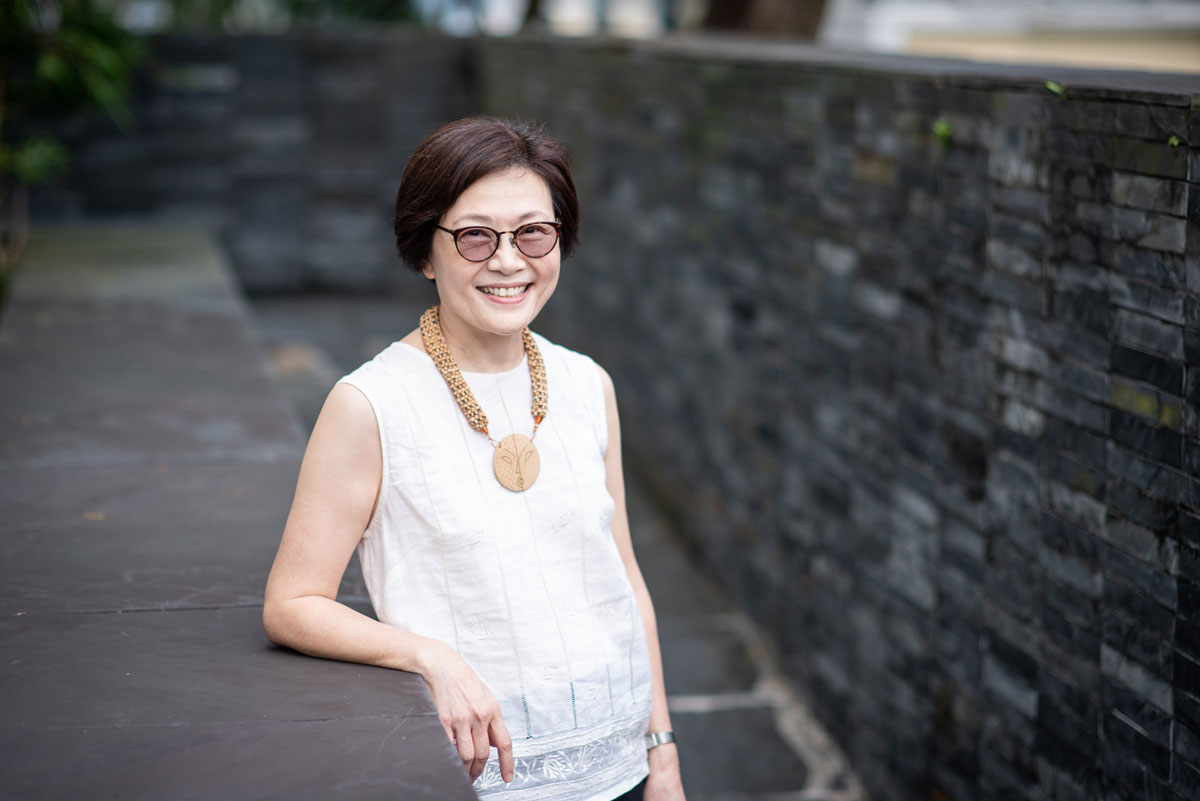
Enlightenment at sea
“We took proper lessons aboard the ship – the academic programme was offered by the University of Colorado. I chose topics that were not available back home, such as art history and women’s studies. We also got on land at over 10 ports for in-depth tours; in Egypt, for instance, the art history professor led us through ancient temples there. It was an eye-opening experience, to say the least. I went through much culture shock too.” Maria could not hide her excitement when recounting these details, despite it being an experience from 40 years ago.
“The Indonesian shadow puppetry performance stunned me the most. It’s totally different from its Chinese counterpart, and left my jaw dangling. You couldn’t see my open jaw now because I have a mask on (lol). The artistic expression and the depth of history in it was just out of my imagination. Before this, I had always had the stereotypical view that Indonesia was backwards.” This experience shocked her into realising that every society has its origins and historical development which mustn’t be taken lightly. “What we should do is to understand and learn about them.”
Maria came back from her voyage in December and found time on her hands before school started again, so she occupied herself with volunteer work. “Not long ago the Yau Ma Tei boat people were fighting for their rights to public housing and needed support, which got me thinking – why did the boat people come to Hong Kong? What do people do when they move? What motivates them, and based upon what circumstances do they make decisions? I find population movement intriguing.” And this was how a young “fan” of anthropology came into being.
“Note the notice board!”
The then sociology student paid the notice board another visit, where opportunities abound, “I often remind my students to heed the board.” This time, she discovered a scholarship offered by Rotary International for a one-year exchange in the US. Hitting the jackpot again, she made her way to the Indiana University of Pennsylvania and this time, to study anthropology.
Together with the credits she earned before, a year at Indiana already allowed her to receive a degree in anthropology. “So, technically I never graduated from HKU.” To this young woman, the abnormal is normal. While hoping to study for a graduate degree in anthropology at CUHK (which had the only anthropology department in Hong Kong), Maria found it could be a while before the programme could be established – so she applied for an East-West Center scholarship to pursue her master’s and doctorate degrees at the University of Hawaiʻi at Mānoa.
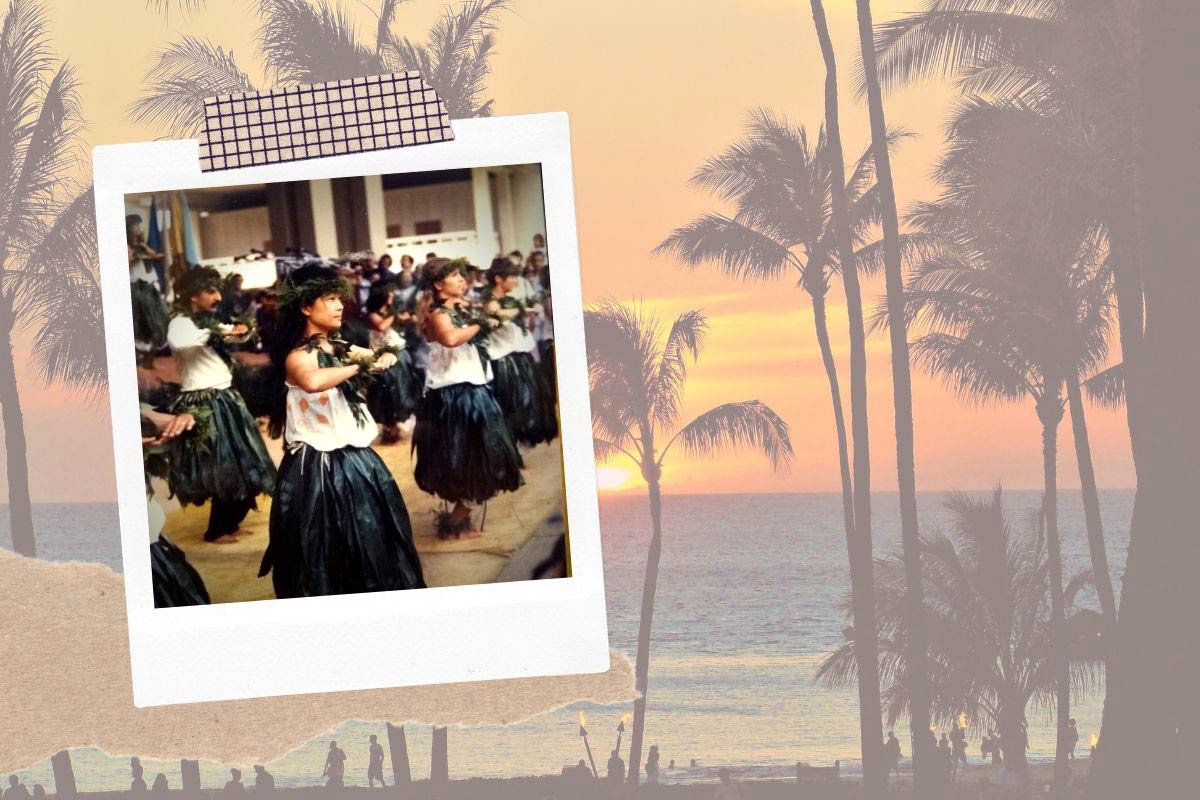
Sharing an alma mater with Obama’s mum
“(Former US President) Obama’s mother was also an anthropology graduate from the University of Hawaiʻi,” I mentioned my little discovery. “Oh yeah, she (Ann Dunham) was my senior. She studied the development of rural Indonesia. (This is why Obama lived in the country for a few years as a child.)” Having lived in both Hawaii and continental US, Maria had a flavour of the enormous cultural difference – be it within the same country.
“The US is comprised of 50 states, each highly autonomous. I consider myself fortunate to have studied in Hawaii – a genuinely diverse scene with loads of fun cultures. Over 30% of its population is Asian; the Japanese came for jobs at plantations, the Chinese worked in sugarcane and paddy fields. Sun Yat Sen studied there, later making it a base to raise funds for the revolution. It’s also a military port; many of the soldiers are black, joining the army out of poverty.” It could be her “occupational disease” – Maria automatically traces the roots of each ethnic group she mentions.
Sounds like Hawaii is the crucible of cultures. In stark contrast, the mid-west, where she has also resided, the locals’ view of the world was very confined. “Throughout my stay (in 1981), the only international news I’ve seen on TV was Prince Charles and Princess Diana’s wedding.”
Her three-month voyage allowed her to see that impoverished countries could give birth to exquisite art. And years in the US made her realise that even in prosperous countries the horizons of many would not stretch beyond their national boundary. “My experience in Hawaii helped me learn in many ways – be knowledgeable and grateful, stay curious, appreciate diversity, and cultivate a sense of fairness and social justice.”
Finally, in Hawaii, her research work on China’s modernisation was about to begin.
“They wanted to leave the villages behind – they wanted freedom”
Anthropology emphasises fieldwork, meaning the researcher has to actually stay for a period of time at her site of research – eating, living, and working together with the locals. Having “the four modernisations” constantly in her mind, in the 1980s, Maria pinned down Shekou Industrial Zone, test site of Shenzhen, China’s first Special Economic Zone. Toiling for a year at an electronics factory, she witnessed the subjugation of individuals under grand national policies.
She recalled the China then – thousands of construction projects underway and building sites dotted the landscape, “I crossed the Lo Wu Bridge (a mere wooden bridge back then), sweat pouring down my forehead. Everyone was carrying bags of supplies for people in their hometowns. Then I had to take a 45-minute minibus ride to get to Shekou. Bashi itself was a new term, mimicking the Hong Kong terminology. The scenery outside the window the whole way was nothing but construction sites.”
Amidst the dusty environment, Maria found affiliation with a state-of-the art electronics factory where she plodded away for 12 hours a day. Her co-workers on the assembly line were entirely young women, determined to escape from their villages for “freedom and independent lives”. But was their dream realised?
“Every day they sat themselves in front of a microscope, threading a wire through a circuit board that’s only one-third the size of a fingernail, twist it for four rounds and a half, no delays – else the assembly line jams. There was a union…an in-house one though, the chief responsibilities of which were allocating benefits each year and checking if the girls were having their period, for fear that they would get pregnant.” Such field experience opened her eyes to “how a money-oriented system affects people”.
“Modernisation comes at a cost. At what cost? Too often women get the short end of the stick.” Since then Maria’s academic career has been steered by issues of gender and social mobility, including for instance the phenomenon of baau yih naaih (包二奶) – how Hong Kong men kept mainland mistresses in the 1990s, and the association between gender and career development in professions such as doctors and lawyers.
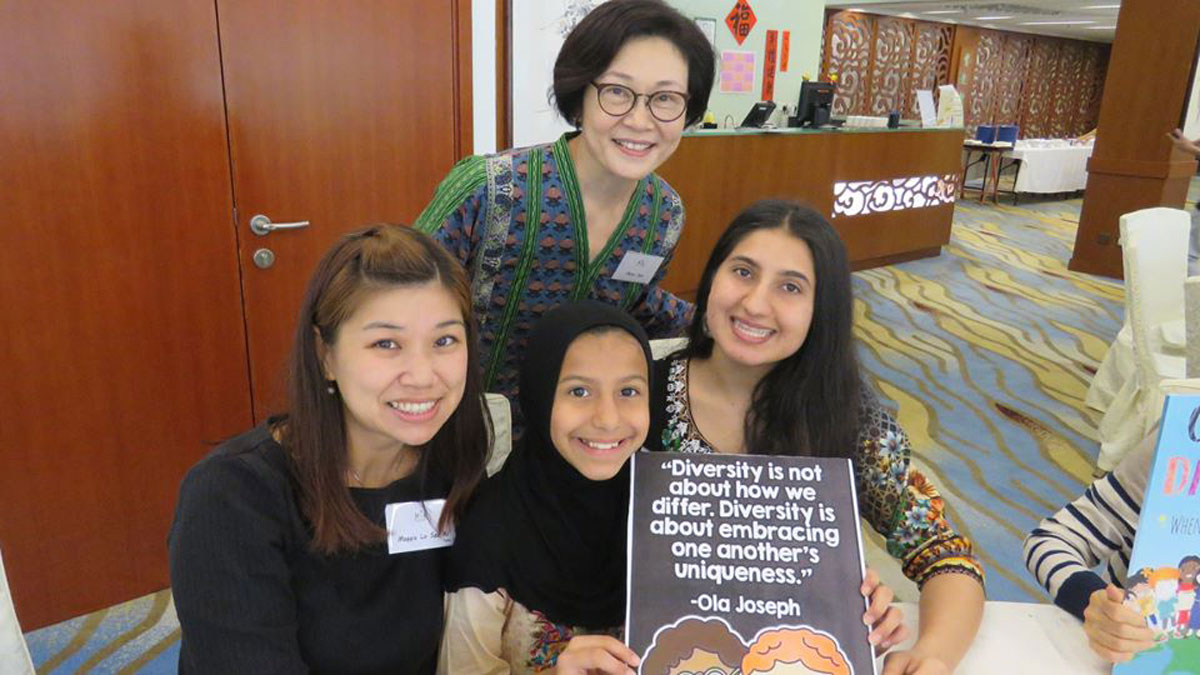
Coming home to local culture
Returning from the US, Maria joined CUHK, expanding her research areas to South Asian cultures including Indian, Nepali and Bangladeshi communities in Hong Kong. “Population movement in our society piqued my interest. I looked at those who ‘drift around’, their motives, how they change the environment with their own capabilities…” After delving into the 1997-related mass emigration, she diverted her gaze onto the city’s minority groups.
“Hong Kong is a migrant society. The Indians came with the British in 1842. They were soldiers, policemen, and traders. The Nepalis arrived later. In 1948, the Brits brought these fearsome warriors, the Gurkhas, to guard the borders and the Vietnamese refugee camps.” In a few sentences, Maria summarises a century in local history.
In the course of her research, she bore witness to the maltreatment and prejudices against these groups, despite having settled in Hong Kong for multiple generations. Such “mindset stuck in the 19th century”, she found, calls for rectifying. Seeing that writing academic papers falls short of the purpose, she set out to champion a better understanding of the cultures of different ethnic groups in daily life, through building partnership in mutual empowerment and change.
In as early as 2013, Maria inaugurated the Multiculturalism in Action Project (MIA) through CUHK’s Knowledge Transfer Project Fund (KPF), prompting Hongkongers to take a spin around fun local cultures. To date, she remains the practitioner being funded the most instances under the scheme.
“Hongkongers are crazy about travelling and long to know the world – when the world is already on our doorsteps, why not make the best of it?” This anthropologist’s comment could almost double as a call from the Tourism Board to explore our own backyard amid the epidemic.
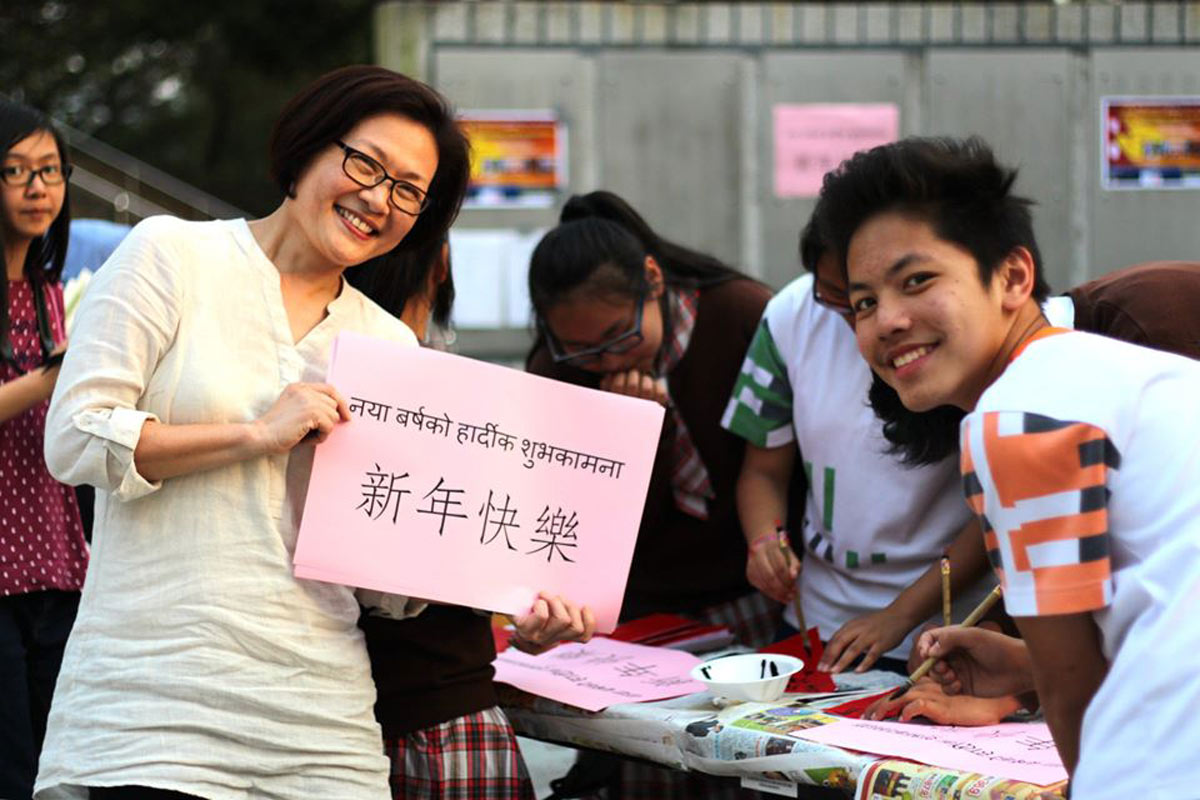
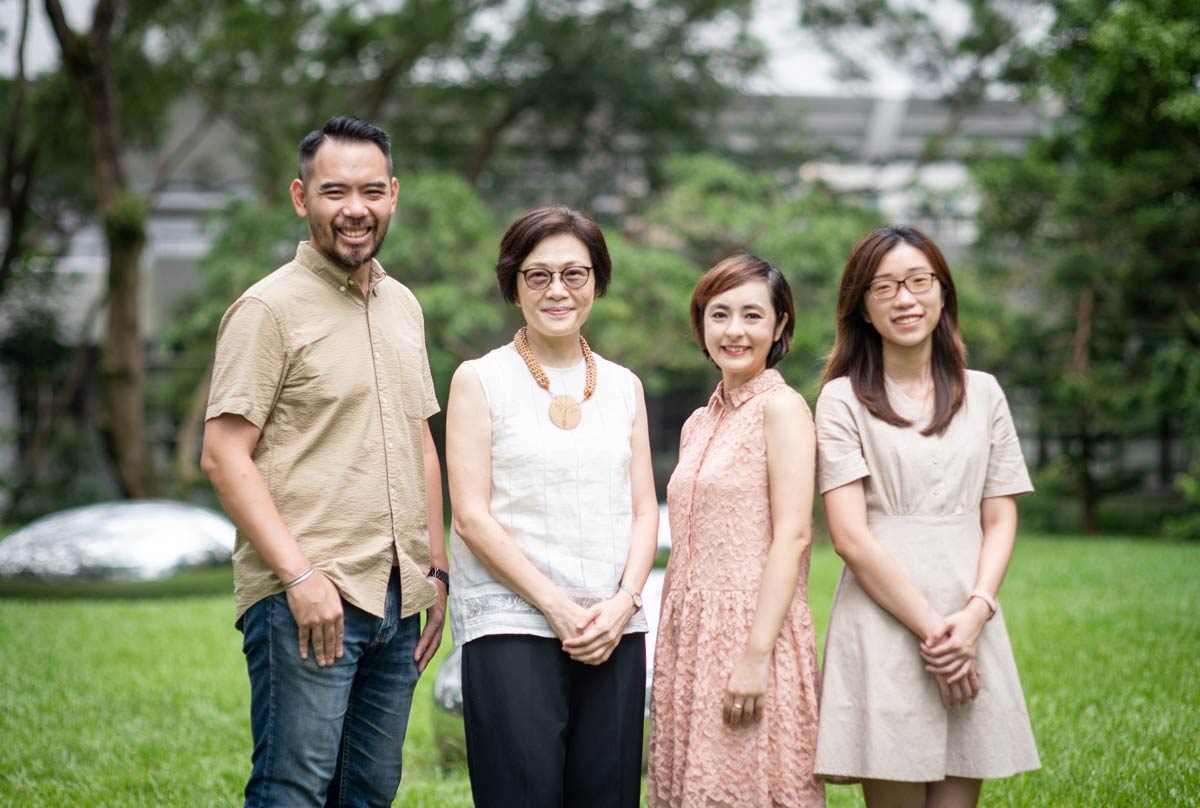
Magnificent “scenery” a jump away
Aside from training Chinese and South Asian young people to be cultural trainers and organising cultural activities, MIA has also published three books over the years. “The first one What are We Celebrating: Multicultural Festivals in Hong Kong introduces 18 ethnic festivals, which serves as a readers’ guide to local festivities.” She has fond memories especially of spending the Nepali New Year with her Nepali friends in Kam Shan Country Park. The other two books are collections of ethnic recipes and crafts, so as readers sharpen their skills, they tune in to stories behind each living individual.
“This Nepali woman is special!” Maria offers us a copy of The ICONIC Mums Kitchen: Tastes of Intercultural Hong Kong, and flips open a recipe for halwa (a sweet dish). The author, a participant of MIA’s ICONIC Mums Programme, called herself jyut loeng gun jyun (literally “moon official”; 月亮官員). “This is the actual Chinese name on her identity card, interesting eh?”
Maria explains that the woman’s Nepalese name is Chandrakala Adhikary. When the officer at the Immigration Department asked what it should be in Chinese, she explained that her surname Adhikary meant official, and her given name Chandrakala means moon (a common female name in Nepal). And the officer translated it word for word.
Indian and Nepalese surnames give us a glimpse to the caste system in these societies, which comprises four divisions and determines marriage and work, and is inherited. “Official” belongs to the second-highest caste, whereas the bottommost group are the dalits – outliers of the system or the untouchables, who often take up the dirtiest jobs. 30 authors in total, telling 30 unique stories of their own.
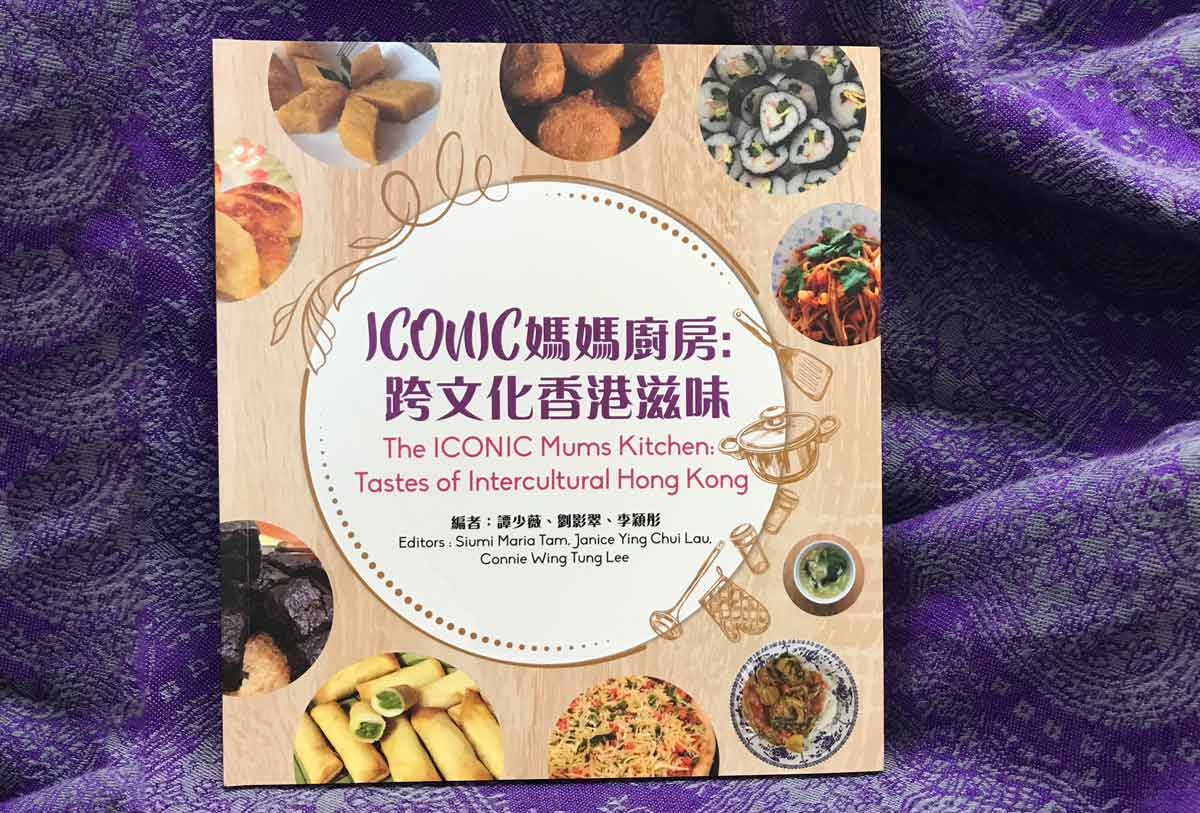
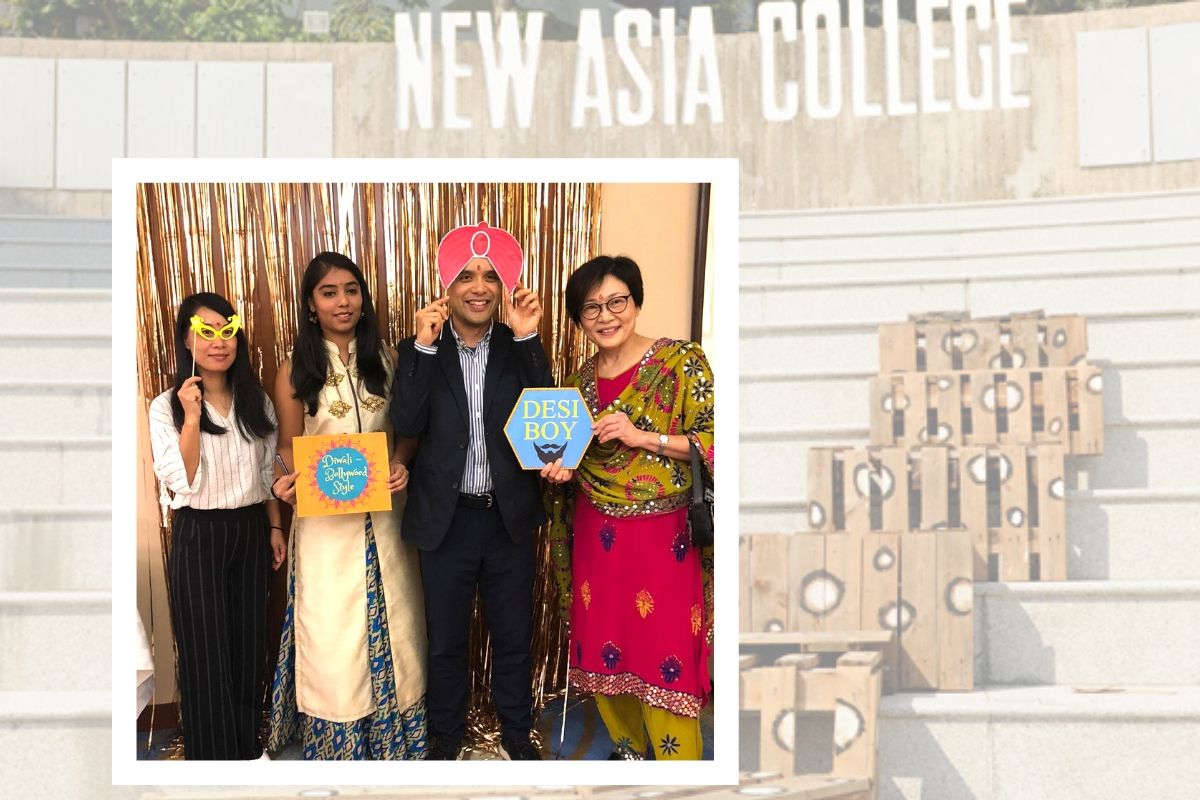
“Values in our society are homogenous”
Reminiscing her many adventures throughout her years of engagement in sociocultural anthropology, Maria radiates a daredevil aura so strong that not even a mask could veil. “It’s my anthropology training. To examine sociocultural issues, besides background research, it is necessary to experience it first-hand, understand it in situ, and interview in person. It takes at least a year to win [research subjects’] trust and acquire comprehensive information.”
She urges the young to see more of the world. “Young people in America commonly travel between the East and West coasts, while those in Hong Kong are reluctant to leave their comfort zones. This has to do with the societal environment – Hong Kong’s social values and industries are overly homogeneous, and, parents are unwilling to let their children explore the world. Still, anthropology graduates are different; they love travelling around after graduation. Life is long enough to venture a year or two!” She puts it straight from the shoulder – that mainstream values are holding young people back from expanding their horizons and breadth of mind, “and that does the society no good.”
“Be humble; it’s a big world out there” is her heartfelt piece of advice to our young generation.
Embracing the world since her salad days, Maria, who grew up in a Catholic environment, has recently developed a liking for quiet moments in the church, away from the hustle and bustle she finds space to think and plan for the next step. “Didn’t like it when I was small, but now I find it a comfy place that welcomes you anytime. I find security there.”
Multiculturalism in Action Project (MIA) at a glimpse
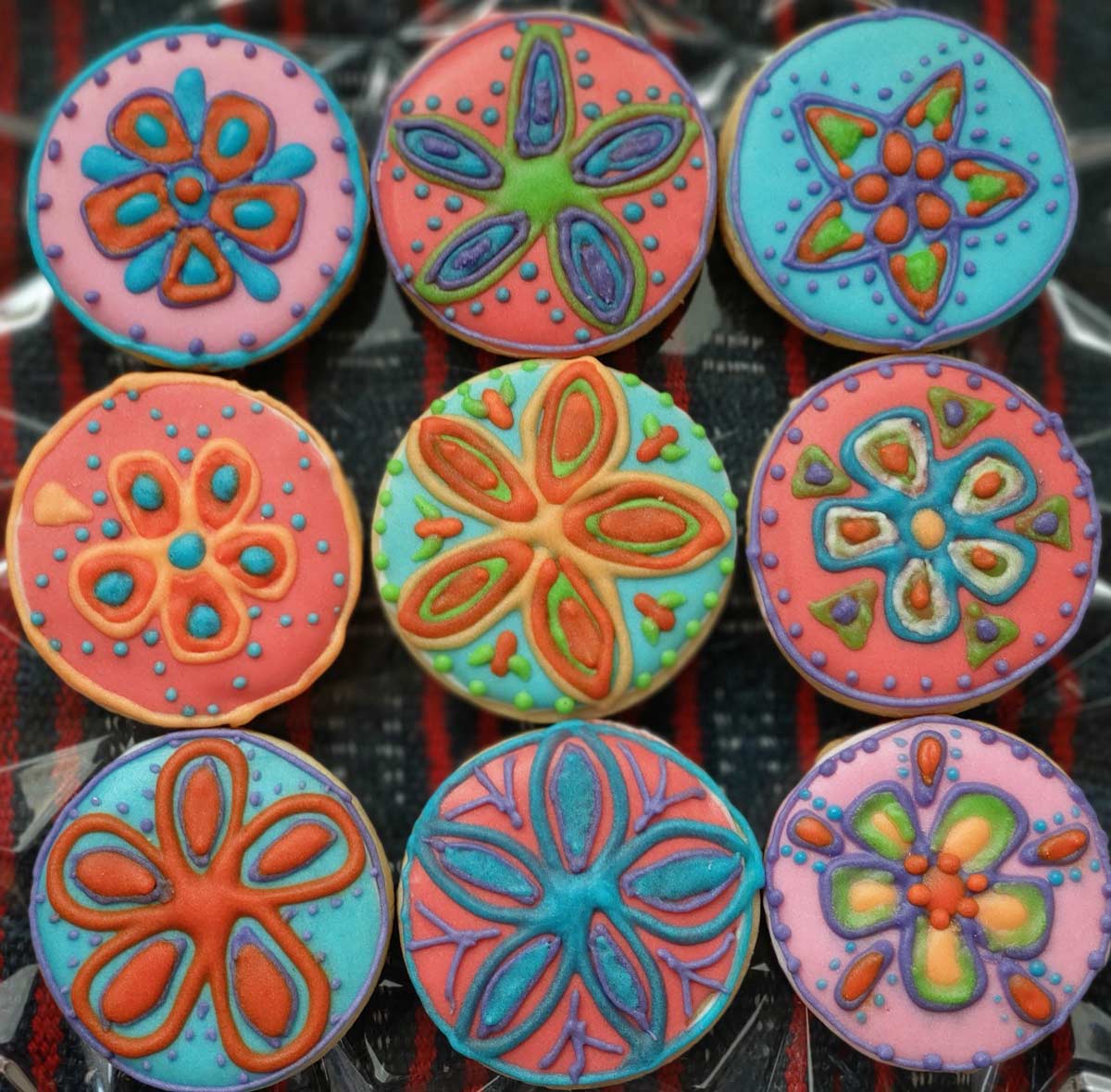
Founding year: 2013
Founder & Director: Prof Maria Tam
Team: Anthropology and social science teachers and postgraduates, cultural trainers of various ethnicities
Mission: To enhance multicultural knowledge and intercultural experiences, enabling different ethnicities to promote positive ethnic relations in Hong Kong together
Belief: Different ethnicities work as partners, mutually empowering one another in the process of societal transformation with sustainable actions
Work: Since 2013, MIA has hosted workshops, themed talks, school and community outreach events; training over 200 cultural tutors and intercultural ambassadors, serving over 25,000 members of the public, students, and teachers
Services: Offering cultural talks and interactive workshops, in-depth cultural field trips and conducting research projects for corporates, schools, organisations and the community
Products:
• Intercultural themed talks (religions, family and gender relations, food and culture etc.)
• Exhibitions (migrant history of South Asian ethnicities, religions, ethnic costumes, food customs, and games etc.)
• Workshops: Arts and crafts, cooking, Kabaddi
• Programme design: Multicultural and social innovation courses
• Community carnivals: Multicultural music and dance performances, booths and games
• Cultural field trips: Community life, religions, food and culture of various ethnicities
• Books, documentaries and online resources
Contact:cuhcm@cuhk.edu.hk
Facebook:MIACUHK
Applied anthropology|Scholarly keyword

According to Maria, although anthropology is traditionally divided into four main branches (archaeology, biological or physical anthropology, sociocultural anthropology and linguistic anthropology), when it comes to applied anthropology (using research methods and theories in anthropology to analyse and solve actual issues), classification is “everchanging” and can be matched up with almost any profession.
Besides “medical anthropology” which Cubic Zine previously covered, there’s also “environmental anthropology”, “design anthropology” etc. Many big corps and tech enterprises like hiring experts in “corporate/business anthropology”, employing the discipline’s insights into human beings in marketing, understanding customer behaviour, UX design, intercultural communication and management. Famous design firm IDEO also leveraged the expertise of anthropologists. “So our students wouldn’t end up jobless,” Maria proclaimed proudly.
(Photo: Unsplash / David Travis)
By Kary Wong@ORKTS
English translation by Cathy Wong@ORKTS
***
One email to feed you the hottest info from the social innovation universe!
Subscribe to Cubic Zine!
***
#WhereIdeasRootAndFlourish

